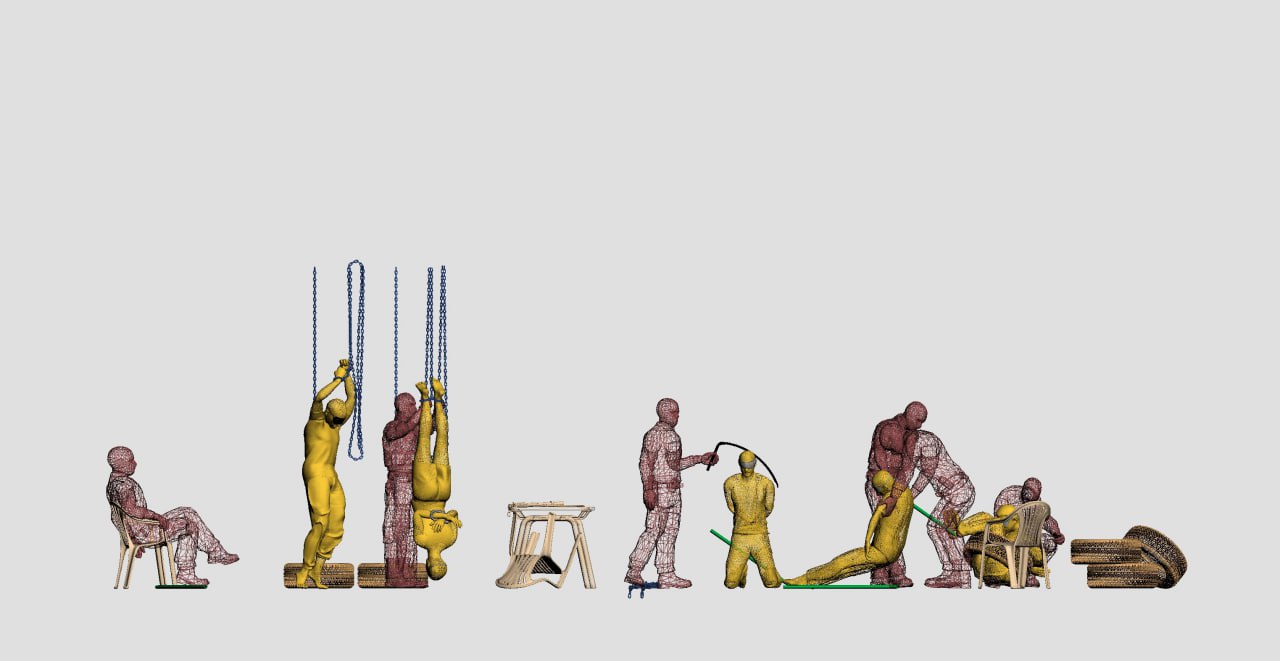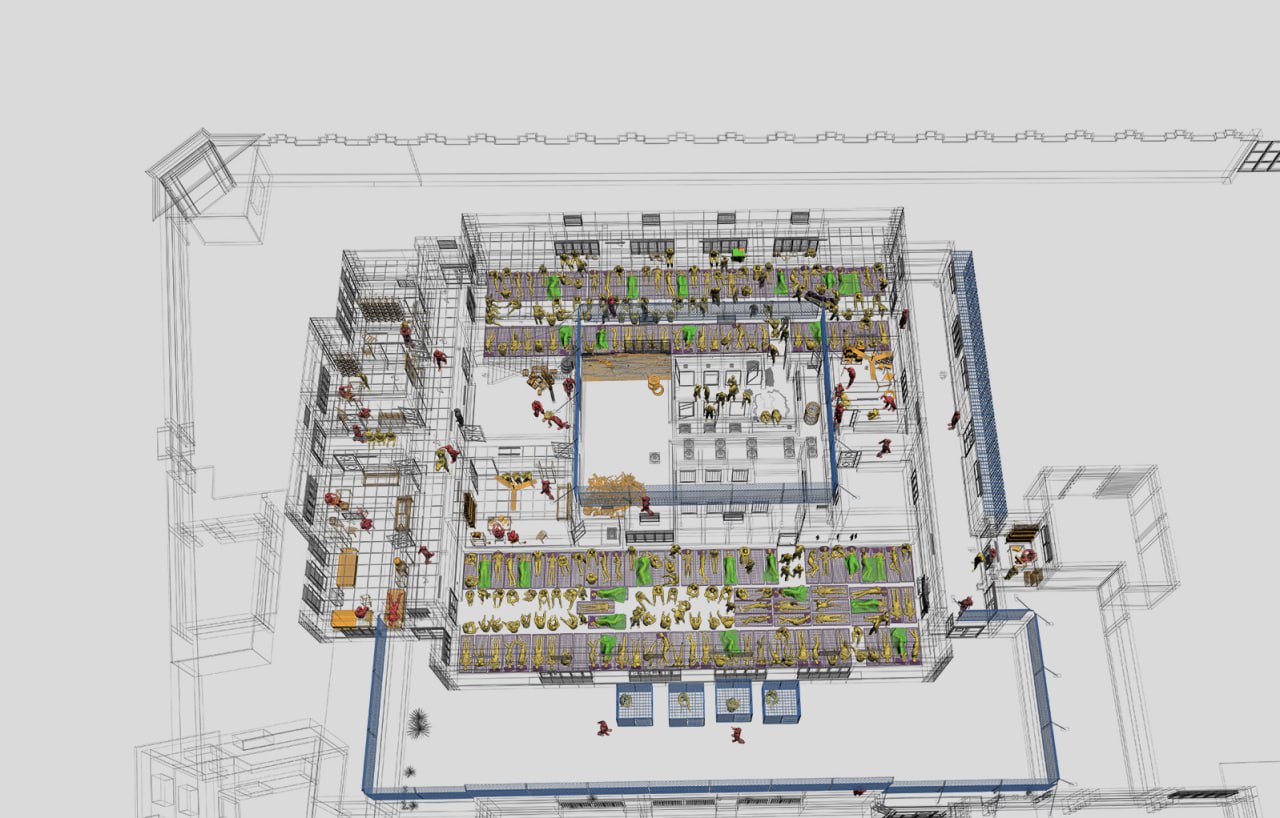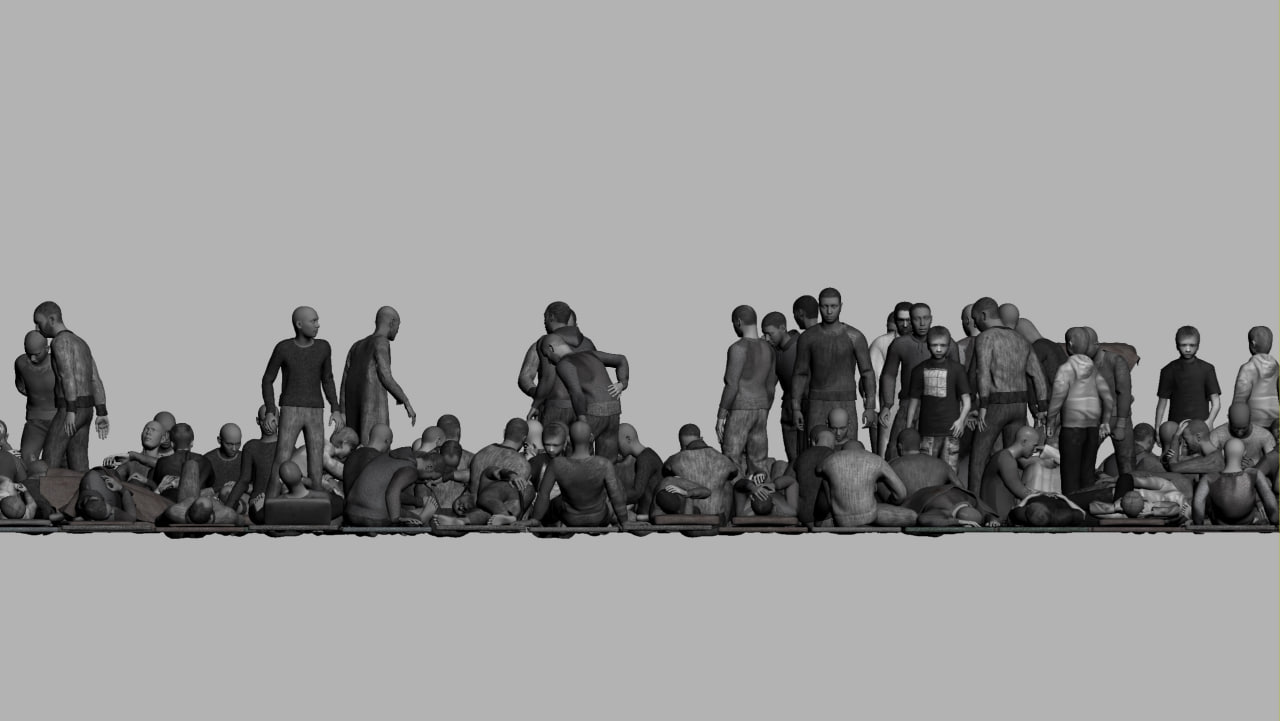In the depths of cyberspace, a chilling new museum has emerged, dedicated to the atrocities committed by the Islamic State of Iraq and Syria (ISIS) within their network of prisons. This digital institution, known as the ISIS Prisons Museum, offers a haunting virtual tour through the foreboding detention centers once used by the so-called Islamic State.
Launched in Berlin a decade after ISIS’s rise in Iraq and Syria, the ISIS Prisons Museum, an interactive digital archive, has launched at https://isisprisons.museum.
As outlined in a press release obtained by KirkukNow, the museum's founder, Syrian journalist A’mir Matar, said that, “this museum chronicles the crimes and human rights abuses committed by the group, with the mission to raise global awareness, document the stories of survivors, and support justice efforts by presenting evidence and findings to legal authorities.”
Over 100 professionals, including investigative journalists, artists, filmmakers, architects, 3D design experts, legal professionals, archivists, translators, analysts, and researchers, have contributed to the project since 2017.
The museum centers on the significant role that prisons played under ISIS’s rule, through which tens of thousands passed many of whom remain forcibly disappeared, their fates still unknown.
Video shows a virtual tour to the ISIS Prisons Museum
In 2014, the so-called Islamic State of Iraq and Syria (ISIS) seized vast territories in northern Iraq. Employing violent tactics, ISIS systematically targeted local ethnic and religious minorities—most notably Ezidis and Christians—in a brutal campaign to obliterate communities whose beliefs opposed its extremist ideology.
Hala Sifil, a survivor of ISIS now living in Australia, shared her perspective with KirkukNow, "for ISIS survivors, seeing this museum is a deeply different experience compared to those who were only displaced or less affected. We were victims—we fell into ISIS's hands, and they subjected us to every imaginable atrocity. These memories are etched in us forever; we cannot forget them."
She added that, "sadly, many groups and organizations have worked on collecting information about the Ezidi victims, but this hasn’t been beneficial to us. For us, the most meaningful and impactful action would be finding the missing and ensuring we don’t lose track of them."
More than 3,580 Ezidis have been rescued to date, out of 6,417 Ezidis kidnapped by ISIS, according to the statistics of the Kurdistan Regional Government’s Bureau for Rescue of Abducted Ezidis.
From a Personal Mission to a Global Initiative
The museum's origins trace back to the quest of A’mir Matar, who sought to find his kidnapped colleague.
Matar said, “Since 2017, as ISIS withdrew from its strongholds in Syria and Iraq, our team entered the buildings the group had converted into prisons, where torture rooms and execution sites were established.”

He also said that “the primary drive was to search for our colleagues, abducted by ISIS in 2013. While we found no trace of them, we uncovered tens of thousands of critical documents and documented hundreds of names that detainees had etched into the prison walls.”
Meanwhile, the museum launched the “Jawab” platform to support families searching for information about missing loved ones and to honor the memory of the victims, according to the press release.
Matar also added that their next mission was to archive and safeguard those materials. Before such buildings were destroyed or restored, they photographed, documented, and preserved every document they discovered.
This process ultimately inspired the creation and launch of the ISIS Prisons Museum. The bilingual archive (Arabic and English) includes a comprehensive database of more than 70,000 documents, alongside personal effects left behind by detainees and guards, and aerial footage of documented mass graves captured by drones. Since 2017, the museum team has conducted hundreds of recorded interviews with prison and massacre survivors, building an extensive record of ISIS's legacy.
The museum's creators hope that by shedding light on these dark places, they can honor the victims and ensure that the world never forgets the horrors that took place within ISIS's iron grip.
Samira A’bid, a Christian woman living in the center of Al-Qush, a town in Nineveh, northern Iraq, told KirkukNow: "When I opened the link and read through it one by one, I was immediately reminded of the dark days of 2014."
“I think this is significant for two reasons: First, it serves as crucial documentation. Second, it ensures that future generations, who might not be aware of ISIS crimes, learn about what they did to humanity," she added.

Inside the Digital Exhibit
Upon entering the museum's virtual space, visitors are transported into the heart of ISIS's former detention centers. The museum utilizes cutting-edge digital technology to recreate the prisons in painstaking detail. According to the museum's description, the 3D tours were filmed using 360-degree cameras, with drone and satellite footage used to enhance the reconstructions further.
The ISIS Prisons Museum also serves as a stark reminder of the sheer scale of the group's detention system. As stated on the museum's 'About' page, tens of thousands of people passed through the network of prisons created by ISIS. The museum's virtual tours offer a haunting glimpse into the vastness of this system, with multiple jails and detention centers recreated in vivid detail.
Inaugural Exhibition in Paris
Beyond its virtual presence, the museum hosts physical exhibitions worldwide. The first of these was held at the UNESCO headquarters in Paris under the title “Three Walls: A Story of Mosul’s Old City,” running until November 14, 2024.
The exhibition displays forensic evidence collected from ISIS crime sites alongside immersive 3D tours of historic sites occupied by ISIS in the Middle East from 2014 to 2017.
The exhibit was inaugurated by renowned Iraqi musician and UNESCO Artist for Peace, Naseer Shamma, who honored Mosul’s musical heritage with a free live concert for 1,300 attendees.
Video shows the Inaugural Exhibition in Paris
A Milestone Documentation Initiative
The creation of the ISIS Prisons Museum represents a significant milestone in the documentation of ISIS's atrocities. The museum provides a unique platform for preserving the history of ISIS's prisons and honoring the victims who suffered within them.
The museum's impact extends beyond simply preserving history; it also serves as a powerful tool for education and awareness. According to the MENA Prison Forum, the museum's first physical exhibition was met with great interest, demonstrating the public's desire to learn more about ISIS's detention system.
Khairi Ali, the director of the Petrichor Human Rights Organization in Sinjar, Iraq told KirkukNow that, "the establishment of this museum is a remarkable and important achievement. It will be an invaluable resource for writers and researchers documenting ISIS's history, as well as for courts prosecuting criminals, especially ISIS fighters."
As the work on the initiative continues, it seems that it also needs more enrichment and improvement, Khairi said that, "we are ready to provide them with accurate information and other critical details whenever needed. Collecting comprehensive and accurate information about the ISIS era is of paramount importance."
In this story, Salam Omer partially utilized Artificial Intelligence (AI) to enhance the research and analysis of the subject matter. All information obtained through the (AI) was rigorously fact-checked, personally reviewed, and ensured to meet ethical and accuracy standards. Leveraging (AI) enabled deeper research and broader content delivery across multiple platforms, enhancing both the depth and reach of the work.





